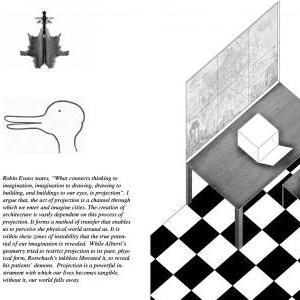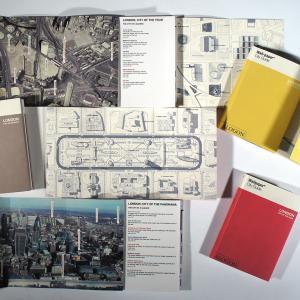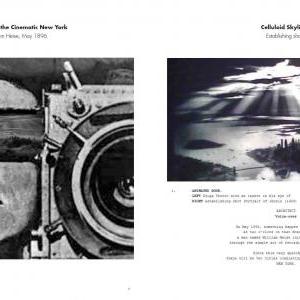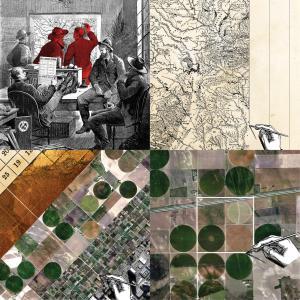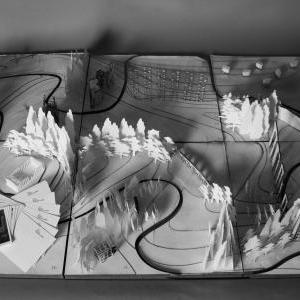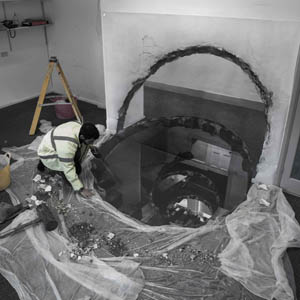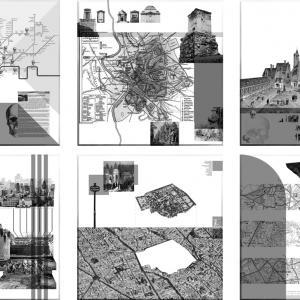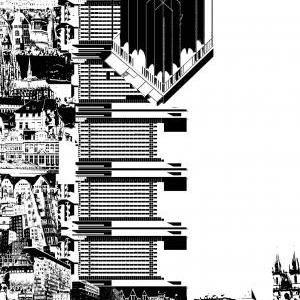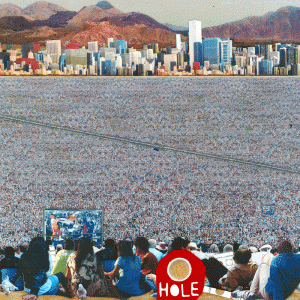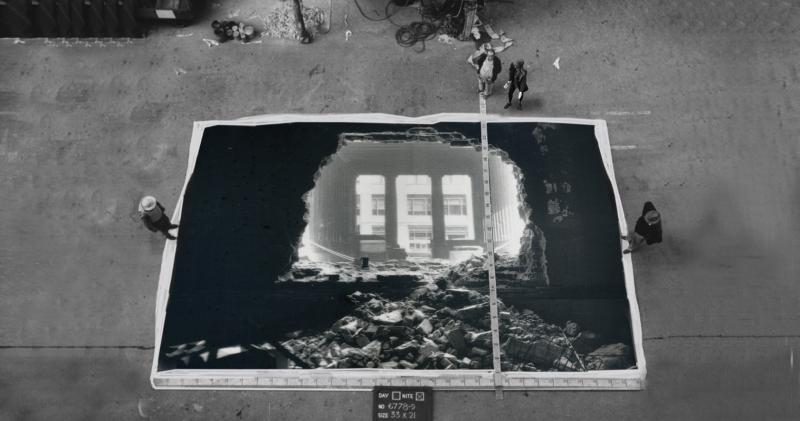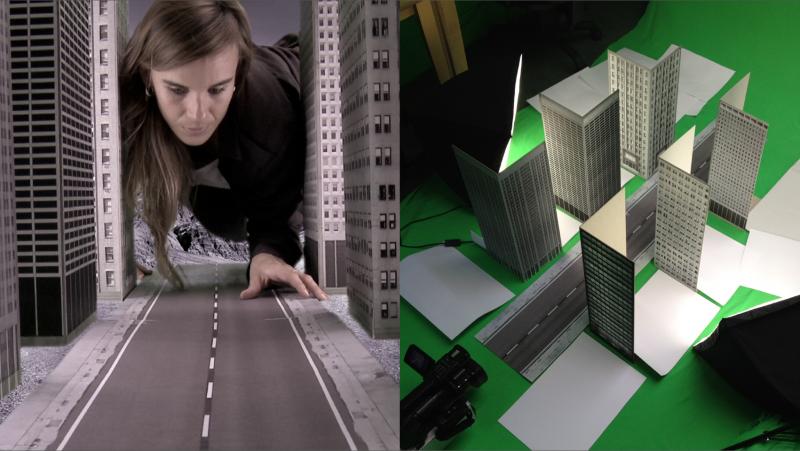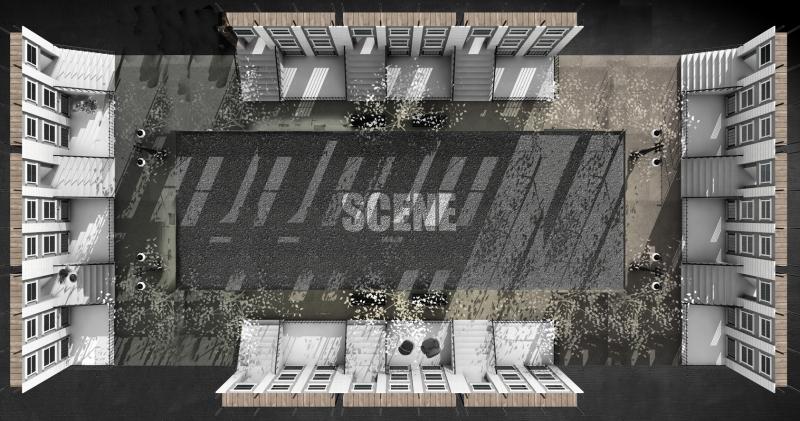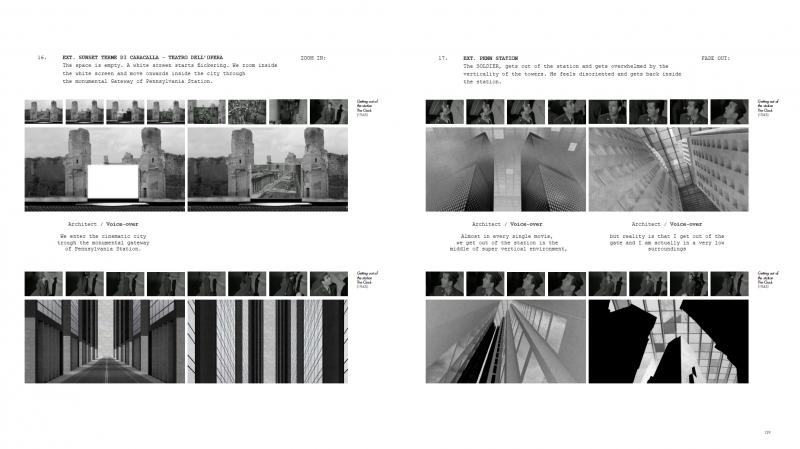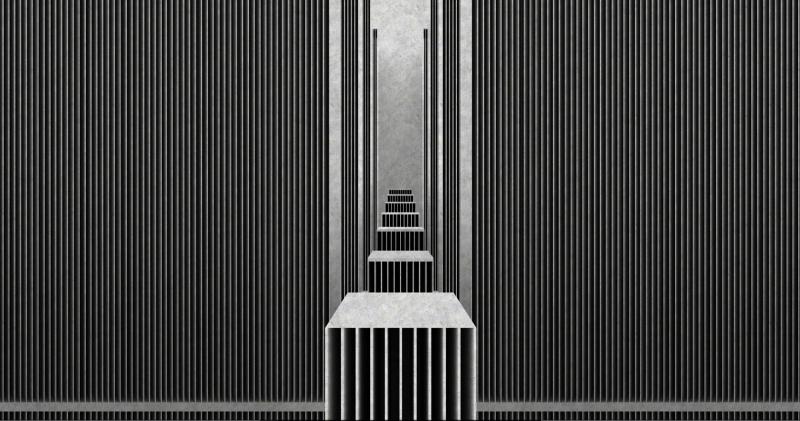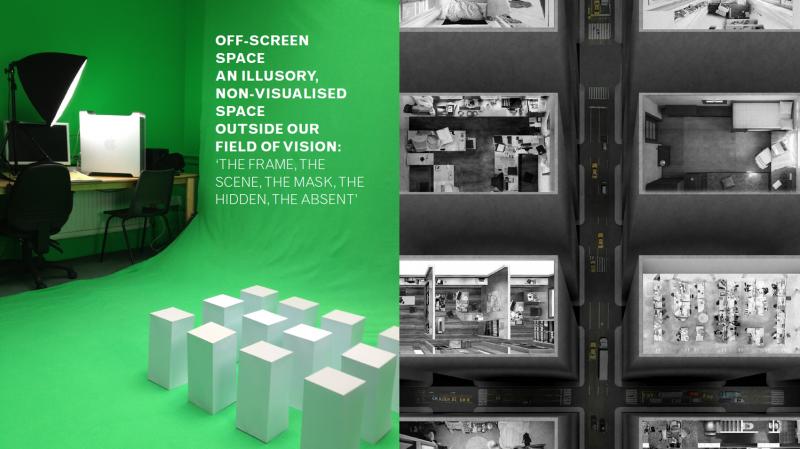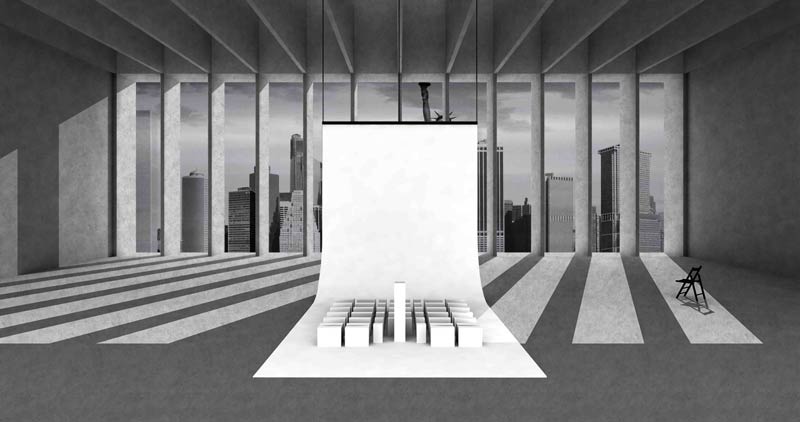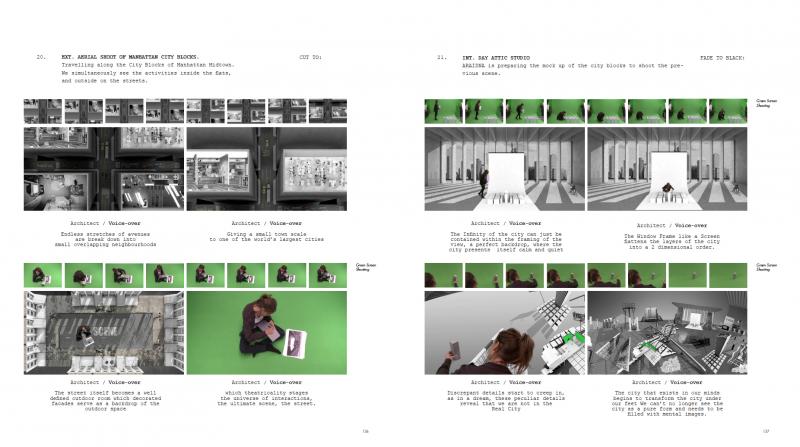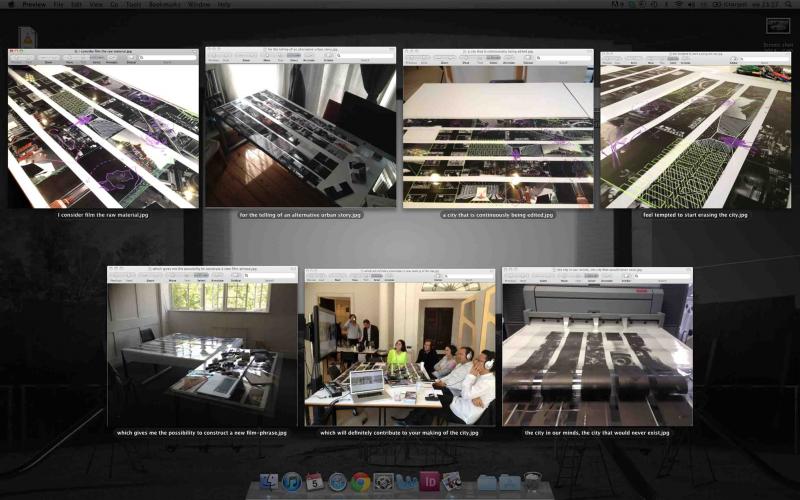Diploma Unit 9 thrives on the looping consequences of architecture’s own stories about itself. This year the ‘ruin’ was posed as a straightforward point of entry for a brief that would explore the ruin as an artefact and the embodiment of a cultural and architectural stagnation. Like last year’s exchange of the room and the city, this year’s work on the ruin led to the making of narratives within narratives, which demanded a comprehension of time and space as utterly elastic.
As Georges cut a series of holes through the physical spaces of the AA he confronted not only the physical exhaustion of a Georgian building, but also the discontinuities of the architectural conceit that makes up the corridor (which he demonstrated as an entity that does anything but connect).
Antoine battled an identity crisis on two fronts: the future of the European city and the future of the architect (and himself) in this unknown terrain. Both Antoine and Georges destroyed in order to build; yet neither conceded a return to the tabula rasa, which reveals itself today as its own kind of architectural ruin.
Ariadna’s project explores so many sub-narratives that we never know which story is the real one set in the place that still might be Manhattan. The project is at once a film as well as a set occupied by both buildings and their architect – a new, unexpected kind of built world. Meanwhile Eleanor battles with the axonometric, an architect’s text, and an architect who becomes, like Luke’s Darth Vader, a father she must destroy to find her place in an architectural world far, far away.
Our work on the ruin was a wipeout where cities that were once whole now stand as devastated landscapes. Through the settling dust we learned this: whatever the ruin may be, its inverse is unknowable – and within that ambiguity lies the potential for an architectural project and the possibility to locate the architect within this new context. It enables us to make work that is committed to what we do best – architecture about architecture.
Staff
Natasha Sandmeier
Special thanks to our guests and critics and support
Charles Arsène-Henry for his seminars and inspiration
Amandine Kastler
Ana Araujo
Andrew Yau
Barbara-Ann Campbell-Lange
Belinda Flaherty
Brett Steele
Christopher Pierce
Dolores Ruiz Garrido
Doreen Bernath
Evan Greenberg
Fabrizio Ballabio
Francesca Hughes
Gabriela Garcia
de Cortazar G
Inigo Minns
Javier Castañón
Kenneth Fraser
Manolis Stavrakakis
Maria Fedorchenko
Marilyn Dyer
Marina Lathouri
Mark E Breeze
Mark Campbell
Mark Cousins
Martin Jameson
Matthew Butcher
Michael Weinstock
Nacho Marti
Ricardo de Ostos
Shin Egashira
Shumon Basar
Sylvie Taher
Takero Shimazaki
Tarek Shamma
Theodore Spyropoulos
Thomas Weaver
Tyen Masten
Ariadna Barthe
The project brings out the irrelevance of the form of the city, far away from being a continuous entity; great cities are a distinct locus of images, memory and dreams.
To explore this affirmation a series of sequences confirm that urban environment cannot be understood outside the space of the celluloid city.
Dealing with both, fiction and reality, the project focus on how images of the cinematic city create continuity.
The power of film relies on the cropping of the image and the cutting away of the context, giving us the possibility to re-arrange and generate entirely new cities with every single movie.
Now, once more after seeing the film, I feel tempted to start erasing the city that I just create for you, which gives me the possibility to construct a new film-phrase, which will definitely contribute to your making of the city, the city in our minds, the city that would never exist.
I consider film the raw material for the telling of an alternative urban story, a city that is continuously being edited.
If we accept the premise that movies are an integral constituent of the urban environment, then the cinematic realm should reveal much about both urban theory and the urban condition. As the same way film influence and shapes the urban life, film is necessary to understand the urban development. Urbanism cannot be understood outside the space of the celluloid city.
‘Imagine if there was no real New York and the only thing we left are films that depict the city, how we will reconfigure the city.
The cinematic space is employed both as an analytical tool and an object of critique: the city, experienced and perceived, is both the medium and the subject of the project in its real-virtual continuum.
